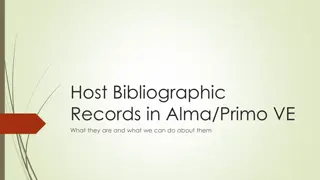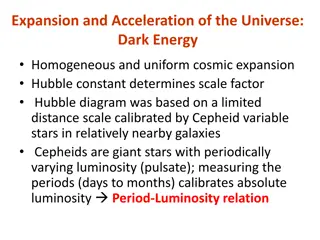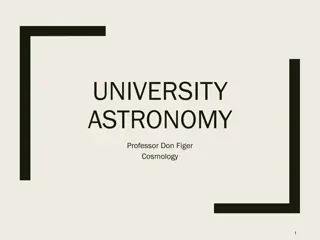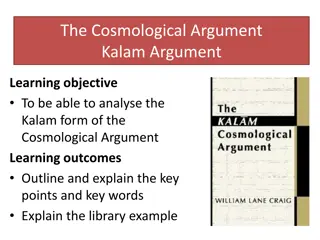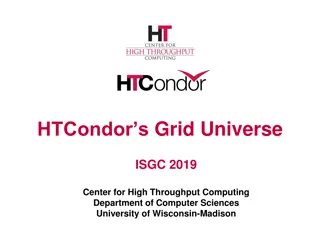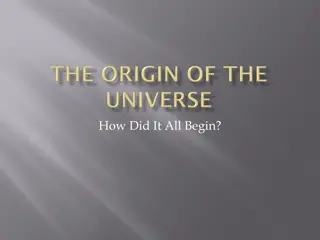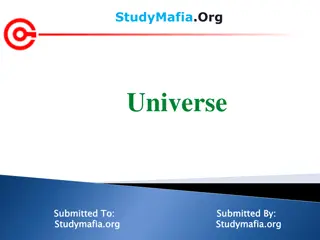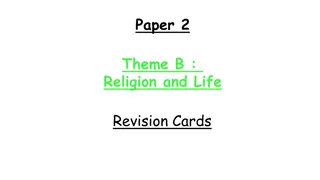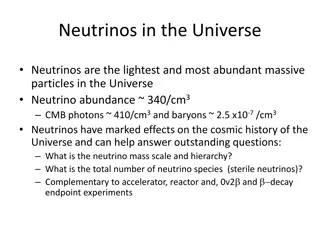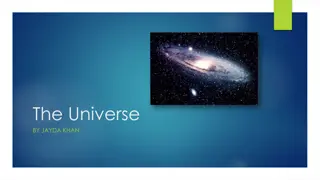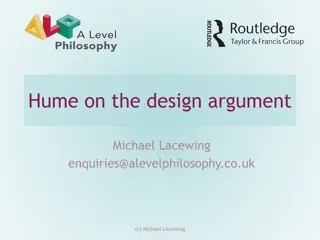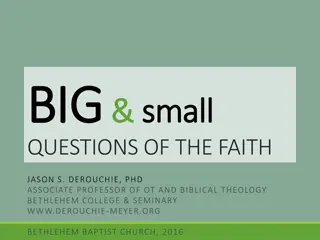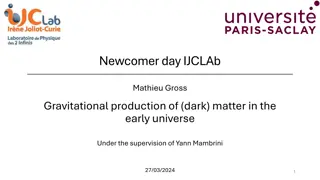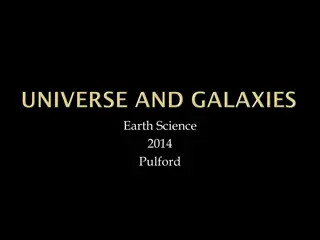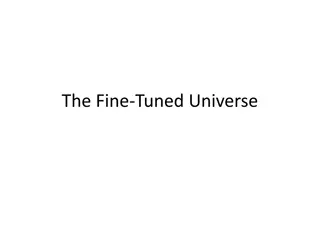Understanding Relationships in Bibliographic Universe
Relationships in bibliographic universe connect entities, providing context through entity-relationship models like IFLA LRM. Learn key terms, principles, and diagrams to identify relationships defined in IFLA LRM. Explore domains, ranges, inverse, recursive, and symmetric relationships. Enhance your understanding of how entities interact within the framework of a model.
Download Presentation

Please find below an Image/Link to download the presentation.
The content on the website is provided AS IS for your information and personal use only. It may not be sold, licensed, or shared on other websites without obtaining consent from the author. Download presentation by click this link. If you encounter any issues during the download, it is possible that the publisher has removed the file from their server.
E N D
Presentation Transcript
Relationships LRM Module 3 Standing Committee on Training Program for Cooperative Cataloging (PCC) March 2020
Learning Outcomes At the end of this module, you will be able to: Define key vocabulary terms associated with relationships Understand basic principles of relationships Interpret entity-relationship diagrams Identify relationships defined in IFLA LRM 2
What are relationships? An essential part of the bibliographic universe Connect instances of entities and provide context for them In entity-relationship models, like IFLA LRM, the entities define the framework of the model and function as nodes, while relationships connect entities to each other ENTITY RELATIONSHIP ENTITY 3
Domain and Range Entities serve as domains and ranges of relationships Domain: The source entity, or departure point, for a relationship The domain is the first entity mentioned in a relationship WORK [domain] is realized through Range: The target entity, or arrival point, for a relationship The range is the second entity mentioned in a relationship EXPRESSION [range] 4
Inverse (Reciprocal) Relationships In inverse relationships the entity that served as the domain becomes the range, the entity that served as the range becomes the domain, and the inverse name of the relationship is used In IFLA LRM, inverse relationships can be referred to by the number of the relationship plus the suffix i (LRM-R2) WORK is realized through EXPRESSION WORK WORK [domain: WORK; range: EXPRESSION] Is realized through realizes (LRM-R2i) EXPRESSION realizes WORK EXPRESSION EXPRESSION [domain: EXPRESSION; range: WORK] 5
Recursive and Symmetric Relationships Recursive: A relationship for which the same entity serves as both domain and range WORK WORK (LRM-R18) (LRM-R18i) WORK has part WORK WORK is part of WORK has part is part of WORK WORK Symmetric: A relationship for which the relationship name is the same as the name of the inverse relationship (LRM-R1) RES is associated with RES (LRM-R1i) RES is associated with RES RES is associated with RES 6
Relationship Names Relationships that express states or ongoing activities are named in the present tense PLACE is associated with RES AGENT is member of COLLECTIVE AGENT RES is subject of WORK Relationships that express actions that were logically completed in the past are named in the past tense WORK was created by AGENT AGENT created EXPRESSION NOMEN was assigned by AGENT 7
Cardinality Cardinality specifies the number of instances of the domain and range entities that may be connected by the specific relationship. 1 to M (one to many): WORK is realized through EXPRESSION Each work has one or more expressions that realize it. Each expression realizes exactly one work. M to M (many to many): WORK was created by AGENT Any agent may create many works. A work may be created by many agents. 8
Entity-Relationship Diagrams Summarize the entities and the significant relationships between them Conventions in IFLA LRM: A rectangle is used for each entity; these are the nodes which are connected by relationships. The name of the entity is written in all capitals within the rectangle. ENTITY A line (arrow) represents the relationship (or relationships) which hold between the entities. The name (or names) of the relationships are written in lower case by the line (first the relationship name, then the inverse name underneath it). relationship inverse 9
Entity-Relationship Diagrams Conventions in IFLA LRM continued: When a relationship is recursive (the same entity is both the domain and the range), the arrow is shown as a loop at one of the corners of the entity rectangle. The name of the relationship is written near the loop. ENTITY recursive When illustrated, the isA hierarchy, which links subclass entities to their superclass entity, is shown with a dotted line. SUBCLASS SUPERCLASS isA The cardinality of a relationship is indicated by the arrowheads: a single-headed arrow indicates that the cardinality for that entity is one (1) 1 a double-headed arrow indicates that the cardinality for that entity is many (M) . M 10
Relationships in IFLA LRM 36 general relationships are declared in IFLA LRM. Implementations of IFLA LRM, such as RDA, may include refinements of the relationships declared in IFLA LRM in a consistent and coherent way. 11
RES is associated with RES (LRM-R1) is associated with The top-level, general relationship RES Refinements: All other relationships declared in IFLA LRM are specific refinements of this relationship. The refinements add to the semantic content of the specific association between particular domain and range entities, and specify stricter constraints when appropriate. In implementations of IFLA LRM, such as RDA, any additional relationships that are needed can be defined as refinements of the additional relationships defined in IFLA LRM or this top relationship. 12
Core Relationships In IFLA LRM, the relationships between works, expressions, manifestations, and items are core. Other relationships are encouraged because they enable exploration and discovery and are very important for end- users. WORK is realized through realizes EXPRESSION is embodied in embodies MANIFESTATION is exemplified by exemplifies ITEM 13
Entity Hierarchy Res The single top-level entity in IFLA LRM is res; all other entities are direct or indirect subclasses of res. The eight direct subclasses of res are: work, expression, manifestation, item, agent, nomen, place, and time-span. Agent is a superclass entity with two subclasses: person and collective agent. Work Expression Manifestation Item Agent Person Collective Agent Nomen Place Time-span 14
isA Hierarchy When one entity is declared a superclass of other entities, the other entities have a subclass relationship to the superclass. This relationship between the subclass and superclass can be expressed as is a (or isA). PERSON isA AGENT [The entity person is a subclass of the entity agent; therefore, all persons are agents.] Time-span isA RES [The entity time-span is a subclass of the entity res; therefore, all time-spans are instances of res.] isA AGENT TIME-SPAN isA PERSON RES 15
isA Hierarchy Any relationship or attribute that applies to the superclass also applies to the subclass without being explicitly declared. The reverse direction is not true; relationships or attributes explicitly defined for the subclass do not apply to the whole superclass. PERSON has place of birth PLACE [A relationship declared for persons that does not apply to agents which are collective agents.] AGENT has place of birth PLACE [A relationship declared for the subclass person cannot be applied to the superclass agent.] 16
Overview of IFLA LRM Relationships The next slide contains an overview diagram of almost all relationships defined in IFLA LRM. To simplify the presentation, the following are not shown: Shortcuts The isA hierarchy that connects all entities to the superclass entity res Inverse (reciprocal) relationships Cardinality The arrow represents the direction of the relationship only and the relationship name corresponds with that direction. 17
18 Note: For detailed explanation of the diagram, see IFLA LRM pages 83-86.
Compound or Multi-Step Relationships Relationships declared in IFLA LRM can serve as building blocks for compound or multi-step relationships. Traversing two or more relationships is referred to as a path . WORK has as subject RES + RES has appellation NOMEN (LRM-R12) (LRM-R13) [The link between a work and a term used to represent its subject is provided by a two-step path which also accounts for the role of the entity res.] has as subject has appellation WORK RES NOMEN 19
Shortcut Relationships When a particular path is frequently required in a particular application, such as RDA, it can be implemented as a single relationship which serves as a shortcut for the more developed path. The intermediate entities become implicit. is equivalent to NOMEN is equivalent to NOMEN (LRM-R15) NOMEN Is the same as the pair of relationships: NOMEN1 is appellation of RES + RES has appellation NOMEN2 (LRM-R13i) (LRM-R13) is appellation of has appellation NOMEN1 RES NOMEN2 20
Relationship Paths with isA The entity subclass/superclass structure (the isA hierarchy) can be used to restrict the domain or range entities in a relationship. (shortcut) created PERSON PERSON isA AGENT + AGENT created WORK (isA) isA AGENT (LRM-R5i) [IFLA LRM has declared the relationship between the entities agent and work. The isA hierarchy is used to specify the agent is a person.] created WORK The above pair of relationships implies the shortcut relationship: PERSON created WORK 21
Relationship Paths with isA Multi-step paths can make use of both the isA hierarchy and the relationships declared in the model. WORK was created by WORK was created by AGENT1 + AGENT1 isA RES + RES has appellation NOMEN + NOMEN was assigned by AGENT2 (LRM-R5) (isA) AGENT1 isA (LRM-R13) (LRM-R14i) RES has appellation was assigned by [The path linking a work to a nomen assigned by one agent (such as a bibliographic agency) with the agent responsible for creating the work. For example, The Color Purple (work) was created by Alice Walker (agent) who is referred to by an access point (nomen) assigned by the Library of Congress (agent).] NOMEN AGENT2 22
Summary Relationships connect entities to each other. The domain is the source entity while the range is the target entity of a relationship. The 36 relationships declared in IFLA LRM are general but may be refined in implementations, such as RDA. The core relationships in IFLA LRM exist between works, expressions, manifestations, and items. The isA hierarchy is used to express a relationship between a subclass and its superclass. Relationships that apply to the superclass also apply to the subclass. In implementations, shortcuts may be defined for frequent multi-step relationships. 23



